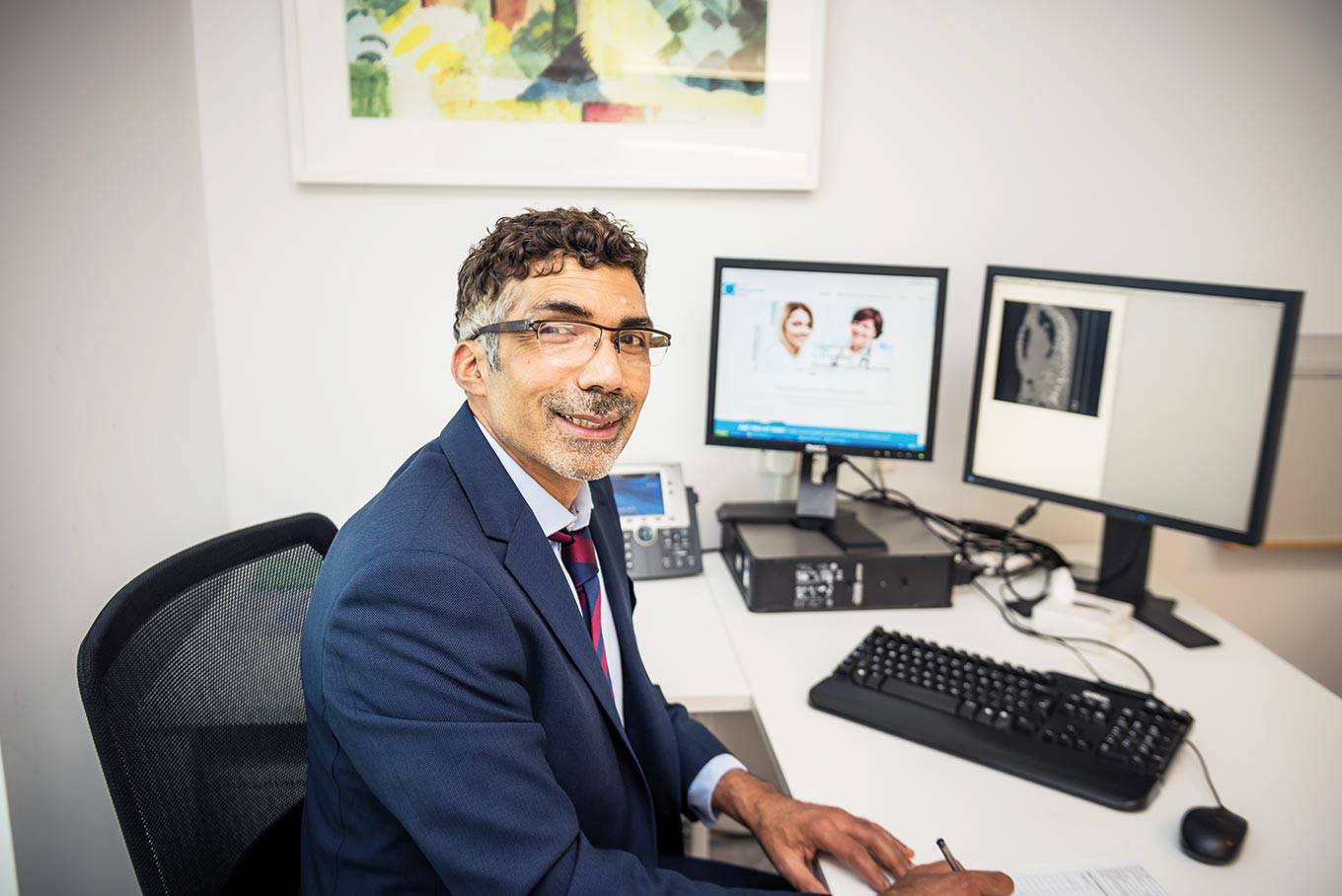Taher Mahmud has been treating osteoporosis for more than 15 years, and has worked in the town since 2006. Last year, he helped start the London Osteoporosis Clinic in Harley Street, and this summer he branched the business out, bringing the clinic to Tunbridge Wells too. Here, he explains all about the condition and the treatment options available.
What made you decide to start the London Osteoporosis Clinic?
LOC was started following a discussion with Professor Sir Graeme Catto and Professor Graham Hughes initially – we wanted to create a service offering excel-lent holistic care, and to be advocates for better screening and treatment for osteoporosis and preventing fractures. The LOC service is modelled on the London Lupus Clinic.
Have you had personal experience of osteoporosis?
My mum has osteoporosis and multiple fractures in the spine, back and pelvis following a serious fall and we did not know if she would ever manage basic personal functions, look after herself or walk again. She was in several hospitals for more than three months. Thankfully, with the correct treatment she has done very well and regained mobility and is enjoying her family and garden.
So, what is it?
Osteoporosis is a condition in which bones become fragile and if not prevented or treated, can progress until a bone breaks.
What are the symptoms?
Early on there are usually no symptoms, but things to look out for are:
- Back pain, caused by a fractured or collapsed vertebra
- Loss of height over time
- A stooped posture
- A bone fracture that occurs much more easily than expected
Is there anything that can increase our chances of developing the disease?
Yes – parental history of hip fracture, alcohol intake of three or more units per day, rheumatoid arthritis and sev-eral other medical conditions, smoking, taking steroids, being underweight or having inflammatory bowel disease and having had a fracture.
Has there been a rise in sufferers?
Yes, the numbers are going up – the world population is increasing, we are getting older and many medical condi-tions are associated with osteoporosis. But osteoporosis can occur at any age – today I saw a patient with osteoporo-sis age 25.
So with a rise in sufferers is there also more awareness about osteoporosis now?
Surveys show only about 25 per cent of people are aware of what osteoporosis is. This is an improvement – there’s increasingly more media reports about research and people with osteoporo-sis. We still need to go a long way but that’s where campaigns like ‘9 Million 2 Many’ will help.
What’s the campaign?
Every year there are 8.9 million bone breaks due to osteoporosis. Most peo-ple who break a bone are treated in the emergency room or at an urgent care facility. And life goes on. But the fact is, men and women as young as 50 may have osteoporosis and not even know it. Yet less than a quarter of older women who break a bone due to osteo-porosis are treated or receive a simple test for osteoporosis.
If we let osteoporosis keep hiding, we’re giving it a chance to break us bone by bone. So the London Osteopor-sis Clinic is sponsoring the campaign, and our mission is to bring together a collation of many stakeholders and interested parties (healthcare provid-ers, businesses, charities and patients) to eradicate osteoporosis.
What is the treatment for osteoporosis?
There are various treatments available. As well as the most widely prescribed medications, bisphos-phonates, the disease can also be treated through nutritional changes and an increase in things like vita-min D and calcium, as well as exer-cise. We work with physio Pilates experts and exercise experts to improve muscle strength. Improved muscle strength improves bone strength. The treatment you require will depend on the risk of fracture.
How does the future look for sufferers?
Actually very bright – amazingly it is possible to reverse osteoporosis through treatments such as medi-cation and by improving bone den-sity.
www.londonosteoporosisclinic.com








